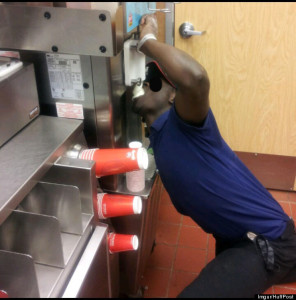How do breastfeeding mothers who want to continue breastfeeding their 10-month-old but have to go from the U.S. to
 Australia for 12 days as part of a graduate course, preserve the milk in a microbiologically safe way?
Australia for 12 days as part of a graduate course, preserve the milk in a microbiologically safe way?
The woman travelling beside me on the 16-hour flight from Dallas to Brisbane had such a scenario (fortunately, there was a spare seat between us).
She brought a breast pump, ice packs, cooler and these groovy wipes (right and left, the ones that advertise no alcohol or bleach, but contain octyl decyl dimethyl ammonium chloride, dioctyl dimethyl ammonium chloride, and a few others). She said there was no way she was going in the bathroom.
She knew her micro food safety and started asking a bunch of questions I really didn’t know the answers to.
I suggested the primary concerns would be cross-contamination and temperature control. Which seems to be supported by what little research is out there.
Another option would be to continue expressing but ditch the milk.
The next day, 26 passengers who were part of a tour group in Santiago, Chile, spent their 14 hours on their Qantas flight barfing
 violently with symptoms consistent with norovirus.
violently with symptoms consistent with norovirus.
“The people were sick prior to the flight,” a Qantas spokesman said. “It was a tour group that had food poisoning so it was contained to them.”
Avoid flights with norovirus.
The breastfeeding passenger has a 12-hour stopover in Brisbane on her way back. She said if she couldn’t get an earlier flight, she’ll visit and take advantage of our freezer.











